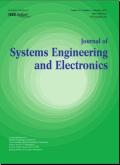DOA Estimation of High-Dimensional Signals Based on Krylov Subspace and Weighted $l_{1}$-Norm
IF 2.1
3区 计算机科学
Q3 AUTOMATION & CONTROL SYSTEMS
引用次数: 0
Abstract
With the extensive application of large-scale array antennas, the increasing number of array elements leads to the increasing dimension of received signals, making it difficult to meet the real-time requirement of direction of arrival (DOA) estimation due to the computational complexity of algorithms. Traditional subspace algorithms require estimation of the covariance matrix, which has high computational complexity and is prone to producing spurious peaks. In order to reduce the computational complexity of DOA estimation algorithms and improve their estimation accuracy under large array elements, this paper proposes a DOA estimation method based on Krylov subspace and weighted基于克雷洛夫子空间和加权 l_{1}$ 准则的高维信号 DOA 估计
随着大规模阵列天线的广泛应用,阵元数量的增加导致接收信号的维数不断增加,由于算法的计算复杂性,很难满足到达方向(DOA)估计的实时性要求。传统的子空间算法需要估计协方差矩阵,计算复杂度高,而且容易产生假峰值。为了降低 DOA 估计算法的计算复杂度,提高其在大型阵元下的估计精度,本文提出了一种基于 Krylov 子空间和加权 $l_{1}$ 准则的 DOA 估计方法。该方法利用多级维纳滤波(MSWF)迭代求解 Krylov 子空间的基础作为信号子空间的估计,进一步利用测量矩阵降低信号子空间观测的维度,构造加权矩阵,并结合稀疏重构建立基于残差平方和和加权 $l_{1}$-norm 的凸优化函数求解目标 DOA。仿真结果表明,所提方法在大阵列条件下具有较高的分辨率,能有效抑制杂散峰值,降低计算复杂度,在低信噪比(SNR)环境下具有良好的鲁棒性。
本文章由计算机程序翻译,如有差异,请以英文原文为准。
求助全文
约1分钟内获得全文
求助全文
来源期刊

Journal of Systems Engineering and Electronics
工程技术-工程:电子与电气
CiteScore
4.10
自引率
14.30%
发文量
131
审稿时长
7.5 months
期刊介绍:
Information not localized
 求助内容:
求助内容: 应助结果提醒方式:
应助结果提醒方式:


